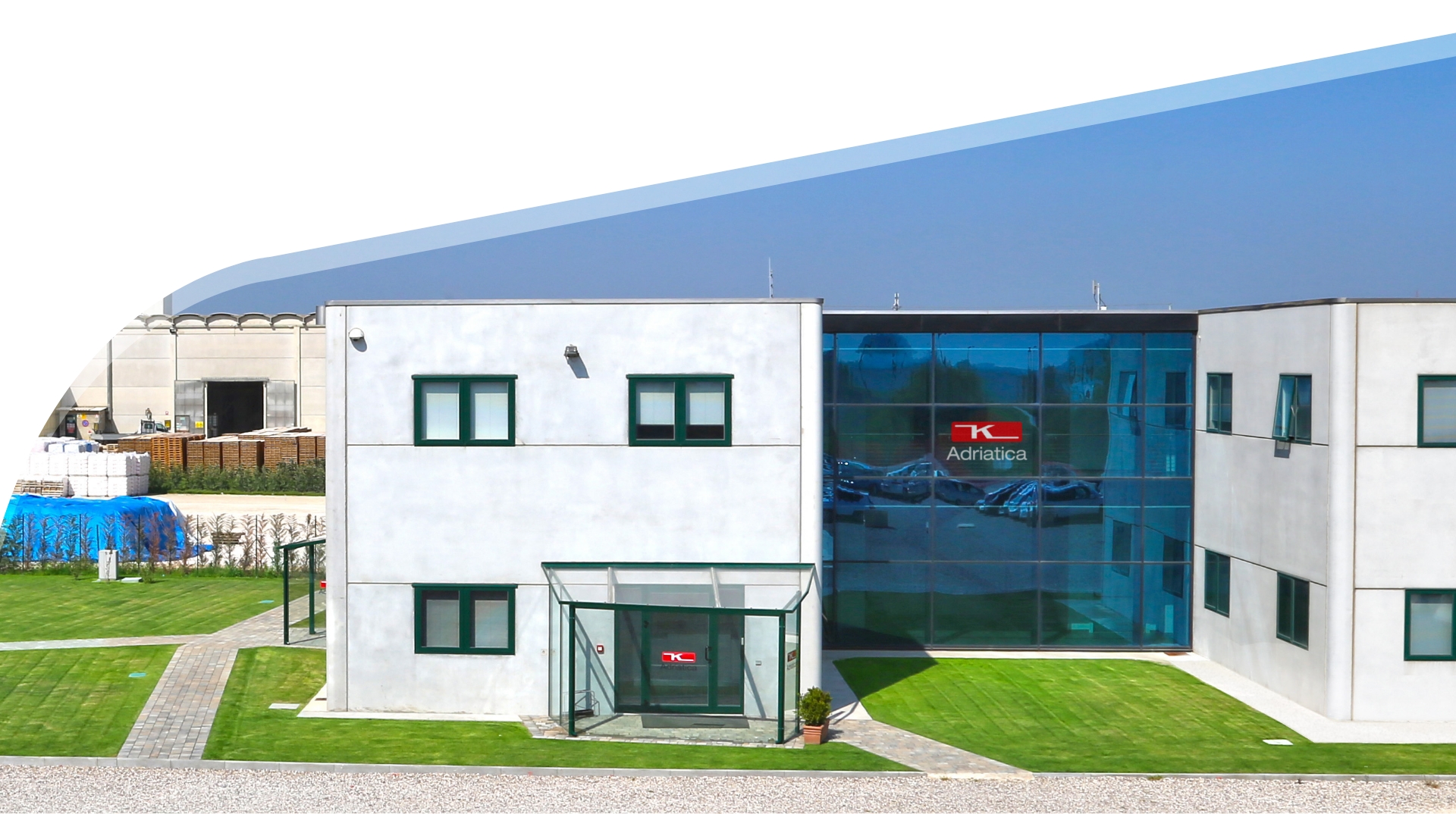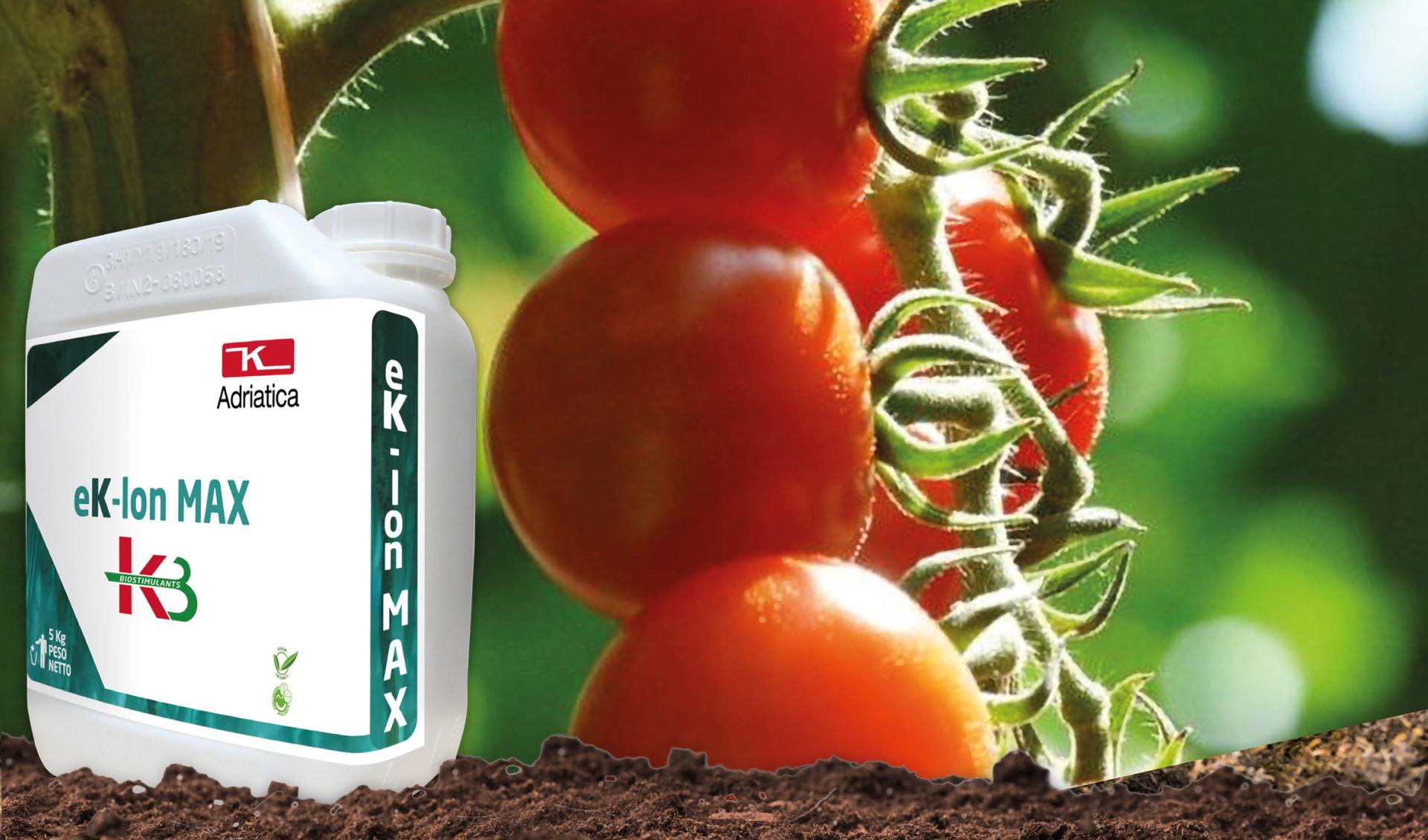
K-Adriatica and biostimulants against climate change

The EU calls for fertilisers use reduction: they need to be made more efficient and bioavailable says Maria Rosaria Stile, director of Research and Development at Adriatica Group
What needs to be done to cope with the crazy climate and the increasing presence of pathogens? K-Adriatica, with more than 50 years of experience, is positioned as a leader in the production of fertilisers and nutritional solutions for fruit and vegetables: the K-Adriatica catalogue has more than 250 products, 30-40% of which are biostimulants.
Adriatica s.p.a produces fertilisers in Italy, in its two plants in Loreo and Noicattaro (Bari), while granulars are also produced in Croatia. The marketing of the products in the K-Adriatica catalogue, managed by the head office in Loreo and 8 subsidiaries located around the world (Croatia, Greece, Morocco, Chile, China, South Africa, USA and India), extends to more than 80 countries around the globe. In addition, the Adriatica Group has a malting plant in Melfi and also carries out genetic improvement activities on cereals.
Maria Rosaria Stile heads the Research and Development Dpt of Adriatica Group, guaranteeing a constant commitment to the search for advanced solutions to tackle the challenges of climate change.
In the context of a drought climate and an increase in pathogens, the European Union is proposing a significant reduction of 50% in pesticides and 20% in fertilisers. How to face this challenge and reconcile agricultural needs?
"In order to respond to the EU's request and face the climate challenges, K-Adriatica proposes innovative solutions. The need to make fertilisers more efficient and promote their uptake is at the heart of the Adriatica Group's strategy. A significant K-Adriatica project focuses on the circular economy, using the by-product of an industrial process for the extraction of proteins from soya, pea and other leguminous plants: this is transformed into a biostimulant, capable of improving the efficiency of fertilisers and enhancing the plants' response to abiotic stresses.
K-Adriatica, in fact, is working on whey, a residue of the raw material (soya, pea, etc.) after protein extraction, which contains nutrients and natural components that not only improve the uptake of fertilisers by plants, but also the response to stress conditions, thanks to their biostimulating action. In fact, at K-Adriatica we have verified that the serum, applied foliar and mixed with both organic and inorganic fertilisers, improves plant uptake. Furthermore, properly formulated and administered by the root route, it has been shown to improve plant response under high salinity conditions."
Within the circulary economy and sustainability of K-Adriatica, an innovative approach emerges through the recovery of malt rootlets from the Adriatica Group's malting plant, which undergo a hydrolysis process to release all the nutritive and biostimulant components. The hydrolysate obtained in this way becomes an integral part of some of K-Adriatica's products, such as the mixture with an algae hydrolysate, designed to fortify the plant and improve its resistance to temperature changes.
Biostimulants are only one aspect of the possible solutions proposed by K-Adriatica, which also considers the soil and the interaction between it and the plant as fundamental.
Contrary to the traditional approach that saw the plant as the farmer's sole focus, today attention is also placed on the soil and its microbiome: in this vision, the use of classic mineral fertilisers is re-evaluated, because they must be used in a targeted manner, e.g. with localised distributions, and above all supplied in the right doses and at the right times. One must work in the direction of achieving soil-plant balance, and K-Adriatica is actively pursuing this from various perspectives.
How much is the climate influencing certain changes/changes in crops?
"Climate change is playing a decisive role in crop variations, influencing both the geographical distribution and duration of crop cycles. Higher temperatures are anticipating their conclusion, leading to a possible advance in the harvest of crops such as tomatoes in the open field. This anticipation could manifest itself as early as spring with high temperatures," the Adriatica Group manager replies. "Moreover, thanks to the ongoing changes, optimal climatic conditions for some crops are also being created in regions that are not historically suited to them, thus opening up new possibilities for crops such as processing tomatoes, which could extend beyond the Po Valley. I would not be surprised if, in a few years' time, open-field tomato plantations were to be found in countries such as Germany and the Netherlands, where production currently takes place mainly under controlled conditions such as greenhouses or above ground. Although the latter is a viable alternative, it is only applicable to certain types of high-income crops, which can bear the costs associated with investment and management."
Is the spread of tropical crops in the South a permanent change, Maria Rosaria?
"The persistence of climatic conditions favourable to the spread of tropical crops in the South could indicate a permanent change in the agricultural landscape: a tangible example was the introduction of the first avocado plantations in Sicily some 20 years ago. It is, however, important to consider that tropical crops, which are often alien to the traditional concept of agriculture, also require specific adaptations in their countries of origin; in Brazil, for example, highly specialised mango plantations have emerged, similar to the apple orchards of the valleys of vocation. This transformation has been driven by growing market demand and the need to improve agronomic practices.
In Sicily, for example, where the introduction of avocado cultivation is being successfully experimented with, it is crucial to learn from the mistakes of the past: an erroneous consideration was to treat the avocado plant in the same way as citrus fruits, adopting similar pruning practices without considering the specific physiology of the plant. This approach has created major problems, because to ensure the success of tropical crops in this region, it is essential to develop suitable cultivation practices; it is a process that requires time and expertise."
Kiwi cultivation has moved south.
"The kiwi," continues Maria Rosaria Stile, "is emerging as a favourite crop in the South, occupying land previously dedicated to old table grape varieties. This is because it costs less to plant, agronomic management and labour, while maintaining an equal or even improved yield. However, it is essential to avoid following the fashions of the moment, as happened in the past with crops such as pomegranate and goji berries, which went from high demand to rapid decline. The spread of a crop is closely linked to the preferences of the end consumer, in fact: often crops that fully enter the mainstream and are not linked to trends of the moment become popular.
In the context of controlled environment cultivation, we currently have the necessary knowledge, tools and facilities to produce a wide range of agricultural products worldwide. However, the assessment of the adaptability of a field crop must be carefully considered, even in cases such as the possible cultivation of ginger on a small scale under controlled conditions."










